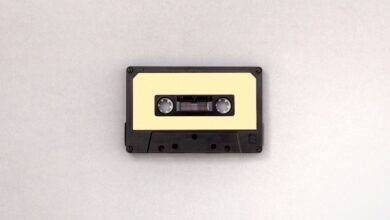The Role of Instruments in Cultural Identity: Preserving Heritage through Music

Introduction:
Have you ever wondered how music can bridge the gap between generations, cultures, and time? It’s truly astonishing how instruments play a vital role in preserving cultural identity and heritage. From the haunting melodies of the sitar in Indian classical music to the rhythmic beats of the djembe in West Africa, instruments possess a unique power to carry the essence of cultural traditions throughout history.
Unleashing the Soul of Culture:
Instruments serve as vehicles that channel the emotions, stories, and values ingrained within a culture. They embody the very spirit of a people, reflecting their beliefs, struggles, and triumphs. Just as language is the vessel for communication, instruments are the vessels for cultural expression. Every note played carries the weight of countless ancestors, echoing through the ages.

Preserving Tradition:
Through the ages, communities have relied on instruments to preserve their heritage. Like a well-worn book, passed down from one generation to another, these musical treasures ensure that cultural knowledge and identity remain alive. Playing traditional instruments is not just about creating beautiful melodies but also about honoring the legacy of those who came before us.
The Universal Language of Music:
While each culture has its own unique set of instruments, the beauty of music lies in its ability to transcend boundaries. Regardless of language barriers or geographical distances, the universal language of music connects souls. Instruments allow us to appreciate the diverse tapestry of humanity, fostering understanding and harmony among different cultures.
Embracing Change:
Cultural identity is a living entity, constantly evolving alongside societal changes. As new generations emerge, so do innovative approaches to music. Modern instruments blend with traditional ones, giving rise to exciting fusions that breathe new life into cultural heritage. This dynamic fusion allows us to celebrate the past while embracing the future.
Conclusion:
Instruments hold the key to unlocking the rich tapestry of cultural identity. They serve as vessels that carry the stories, emotions, and values of a people through generations. By preserving and cherishing traditional instruments, we ensure that our heritage remains vibrant and alive. Through the universal language of music, we can bridge gaps and foster understanding among diverse cultures. Let us honor the past, embrace the present, and continue to create harmonious melodies that resonate with the soul of humanity.
Harmony Uniting Cultures: Exploring How Instruments Preserve Cultural Identity
Have you ever wondered how music transcends borders, connecting people from diverse backgrounds and cultures? It’s truly remarkable how a universal language like music can bridge gaps, fostering harmony and preserving cultural identity. In this article, we will delve into the fascinating world of instruments and their role in uniting cultures.
Instruments are more than just tools for creating melodies; they are powerful vessels that carry the essence of a culture. Picture an orchestra where various instruments harmoniously blend together, each representing a unique cultural heritage. Just as every brick contributes to building a magnificent structure, each instrument contributes to the rich tapestry of our global musical heritage.
Think about the vibrant sounds of the sitar, a stringed instrument synonymous with Indian classical music. Its distinct timbre and intricate melodies paint a vivid picture of Indian culture, evoking emotions and immersing listeners in a world far away. Similarly, the African djembe drum beats to the rhythm of tribal gatherings, embodying the spirit and energy of its people. These instruments become conduits through which cultural stories are told, passed down from generation to generation.
Analogous to spoken languages, instruments possess dialects specific to regions and communities. Just as a French accent differs from a Japanese one, the sound of a flamenco guitar varies from that of a Chinese erhu. This diversity is what makes music so fascinating and allows us to explore the nuances of different cultures. When we listen to these instruments, we embark on a journey, embracing the unfamiliar and celebrating the beauty of diversity.
Moreover, instruments inspire collaboration and cultural exchange. Musicians from different backgrounds come together, blending their unique styles and techniques. It’s like a grand symphony of cultures, where the collective harmony is greater than the sum of its parts. By embracing and learning from one another, we gain a deeper appreciation for our shared humanity.



Instruments play a vital role in preserving cultural identity and fostering unity among diverse cultures. They are the threads that weave together the tapestry of our global musical heritage. Through their unique sounds and captivating melodies, instruments enable us to embrace the beauty of diversity and celebrate the richness of different cultures. So next time you listen to music, let the harmony of instruments transport you on a journey across continents, immersing yourself in the wonders of our shared human experience.
Melodies of the Past, Beats of the Future: How Music Instruments Shape Cultural Heritage
Have you ever stopped to ponder the profound connection between music instruments and cultural heritage? These extraordinary tools have been carrying the melodies of the past while paving the way for the beats of the future. From ancient civilizations to modern societies, music instruments have played a pivotal role in shaping and preserving diverse cultures around the world.
Imagine the enchanting tune of an Egyptian harp resonating through the pyramids, carrying echoes of a civilization that thrived thousands of years ago. Or picture the rhythmic vibrations of tribal drums, uniting communities and celebrating their rich traditions. These instruments are not mere objects; they are vessels of cultural identity, passing down stories, emotions, and values from one generation to another.
Music instruments are ambassadors of cultural heritage, transcending language barriers and connecting people on a universal level. They encapsulate the essence of a particular culture, conveying its unique flavors and nuances through harmonies and melodies. Whether it’s the intricate sitar of Indian classical music or the soul-stirring bagpipes of Scottish folk tunes, each instrument weaves a tapestry of cultural significance.
Moreover, music instruments serve as catalysts for innovation and evolution within musical landscapes. As human creativity knows no bounds, musicians constantly strive to push boundaries and create new sounds. Traditional instruments often undergo modifications and adaptations, blending with contemporary elements to form hybrid genres and styles. This fusion of tradition and innovation not only breathes new life into cultural heritage but also opens doors to unexplored sonic territories.

Considering the impact of music instruments on cultural heritage, it becomes apparent that their preservation and promotion are of utmost importance. Efforts should be made to conserve traditional craftsmanship techniques, ensuring the continuation of ancestral know-how. Additionally, education and awareness programs can help younger generations appreciate the value of these instruments, fostering a sense of pride in their cultural roots.
From Bagpipes to Tablas: Unveiling the Global Tapestry of Musical Instruments
Introduction:
Have you ever marveled at the diverse sounds and melodies produced by musical instruments from around the world? Each culture has its unique way of expressing emotions and telling stories through music. From the haunting notes of bagpipes echoing across the Scottish Highlands to the rhythmic beats of tablas resonating in Indian classical music, the global tapestry of musical instruments is a testament to the rich heritage and creativity of humanity.
Bagpipes – The Soul-Stirring Call of Scotland:
When one thinks of Scotland, the image of a kilted Highlander playing the bagpipes often comes to mind. This iconic instrument consists of a bag filled with air, which the musician squeezes to produce sound. With its distinct mournful tone, the bagpipe captures the essence of Scottish tradition and folklore, evoking both melancholy and resilience.
Tablas – The Rhythmic Heartbeat of India:
Traveling eastwards, we arrive in India, where the mesmerizing sound of tablas commands attention. These percussion instruments, consisting of two drums, create a symphony of rhythm and melody. Mastering the intricate finger movements and complex beats requires years of practice, but when played skillfully, the tablas can transport listeners to a different realm, connecting them to centuries-old traditions.
Exploring Cross-Cultural Influences:
The beauty of the global tapestry of musical instruments lies in the interplay between different cultures. Over centuries, instruments have traveled across continents, influencing and being influenced by new environments. For instance, the guitar, originally from Spain, found its way to America and became an integral part of blues, rock, and jazz music. Similarly, the sitar, hailing from India, captivated Western audiences and left an indelible mark on popular music during the 1960s.
Preserving Cultural Heritage:
In today’s interconnected world, it is crucial to appreciate and preserve the diverse musical traditions that exist. Cultural exchange and collaboration among musicians help bridge gaps and foster mutual understanding. Organizations such as UNESCO strive to safeguard intangible cultural heritage, recognizing the value of musical instruments as conduits of cultural identity and artistic expression.
Conclusion:
As we traverse the global tapestry of musical instruments, we uncover a vibrant mosaic of sounds, rhythms, and emotions. From the haunting bagpipes to the pulsating tablas, these instruments weave together the stories and experiences of countless communities. Let us embrace this rich diversity and celebrate the universal language of music, which transcends borders and unites us all.
Safeguarding Traditions: The Crucial Role of Instruments in Cultural Preservation
When it comes to safeguarding traditions and preserving cultural heritage, one cannot underestimate the crucial role that instruments play. These musical tools act as time capsules, carrying the essence of a culture from one generation to another. Their melodic tunes and rhythmic beats have the power to transcend boundaries and connect people across continents.
Instruments serve as the storytellers of ancient traditions. They channel the emotions, beliefs, and values that define a culture. Just like words in a book or strokes on a canvas, instruments express the unique identity of a community. From the haunting melodies of the sitar in Indian classical music to the vibrant rhythms of the djembe in West African drumming, each instrument weaves a narrative that reflects the history and spirit of its origin.
Through the preservation of traditional instruments, communities ensure that their cultural practices continue to thrive. These musical artifacts are not mere objects; they carry the wisdom and knowledge of past generations. The craftsmanship involved in creating these instruments is often passed down through families and communities, creating a lineage that connects the present with the past.
In addition to their cultural significance, instruments also have a profound impact on individuals. Learning to play an instrument instills discipline, patience, and dedication. It fosters creativity and provides an outlet for self-expression. Moreover, playing an instrument can be a communal experience, bringing people together to create harmonious sounds and forge lasting bonds.
Just like languages evolve and adapt over time, so do musical traditions. However, it is crucial to strike a balance between innovation and preservation. Embracing new technologies and styles can breathe new life into traditional instruments without erasing their cultural roots. Incorporating modern elements while respecting the core essence ensures the continuity of traditions and attracts younger generations to engage with their heritage.




